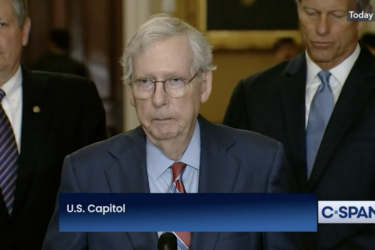 In an effort to help consumers get a better handle on drug prices, five U.S. senators — all Democrats — are pressuring the Centers for Medicare & Medicaid Services to be more forthcoming about efforts to contain costs and help seniors cope with the high costs of prescription drugs.
In an effort to help consumers get a better handle on drug prices, five U.S. senators — all Democrats — are pressuring the Centers for Medicare & Medicaid Services to be more forthcoming about efforts to contain costs and help seniors cope with the high costs of prescription drugs.
Sen. Mark R. Warner (D-Va.), Sen. Bill Nelson (D-Fla.), Sen. Jeanne Shaheen (D-N.H.), Sen. Heidi Heitkamp (D-N.D.), and Sen. Tim Kaine (D-Va.) cosigned a letter on Dec. 17 to CMS Acting Administrator Andrew Slavitt, seeking more information on the agency’s efforts to maximize the agency’s existing authorities on prescription drug costs.
In 2014 alone, spending on prescription drugs rose by 12.2 percent, according to a statement from Warner. “Inevitably, these rising costs squeeze American household budgets as well as federal and state budgets, Medicare, Medicaid, and other public health care programs that use taxpayer dollars to pay for drugs.” Other reports put this spending increase even higher.
The senators asked CMS for more information on how the agency expects to improve transparency on drug pricing and bring down drug costs. They also asked about CMS’existing authority to halt rising drug prices, and seek greater understanding of how the department as a whole can leverage information to better assess the effectiveness of treatments and provide better information to consumers.
The letter includes questions about alternative payment mechanisms, including use and access to competitive generic medications; how CMS can use assessment information from outside, independent research organizations to improve outcomes and lower program spending and how CMS can continue to use its regulatory authority to ensure consumer access to prescription drugs on the individual market.
The five senators have sponsored legislation and sit on committees that oversee issues related to Medicare, Medicaid and costs.
Prescription drug pricing for older adults has improved since implementation of the Affordable Care Act, according to this Commonwealth Fund report. As Mark Miller explains in this article for Reuters, however, the coverage gap dubbed the “donut hole” still requires seniors to pay all out of pocket costs – up to a yearly limit – after the threshold is reached for covered drugs. Once the yearly limit is reached, the coverage gap ends and the drug plan helps pay for covered drugs again.
In a related development, Sen. Susan Collins (R-Maine) and Sen. Claire McCaskill (D-Mo.), who lead the Senate Special Committee on Aging, announced a bipartisan Senate investigation into pharmaceutical drug pricing. This follows a series of media reports detailing dramatic drug price increases – often on older, off-patent drugs—after the acquisition or merger of pharmaceutical companies.
Ideas for reporters:
- What are the greatest prescription drug pricing issues in your community? Who are the biggest prescribers? For what drugs?
- Where do your elected representatives (local/state/federal) stand on this issue? What are they doing to address high drug costs?
- Are there programs available that help seniors cover costs of these often life-saving medications?
- What do pharmaceutical companies say about drug pricing?
Quick resources:
- CMS Fast Facts: Annual CMS program and financial data (current as of November, 2015).
- Medicare Part D prescriber lookup tool.
- This post by AHCJ insurance topic leader Joseph Burns on a controversial proposal to revamp Part D.
- Another post by Burns that looks at protecting certain classes of drugs.









